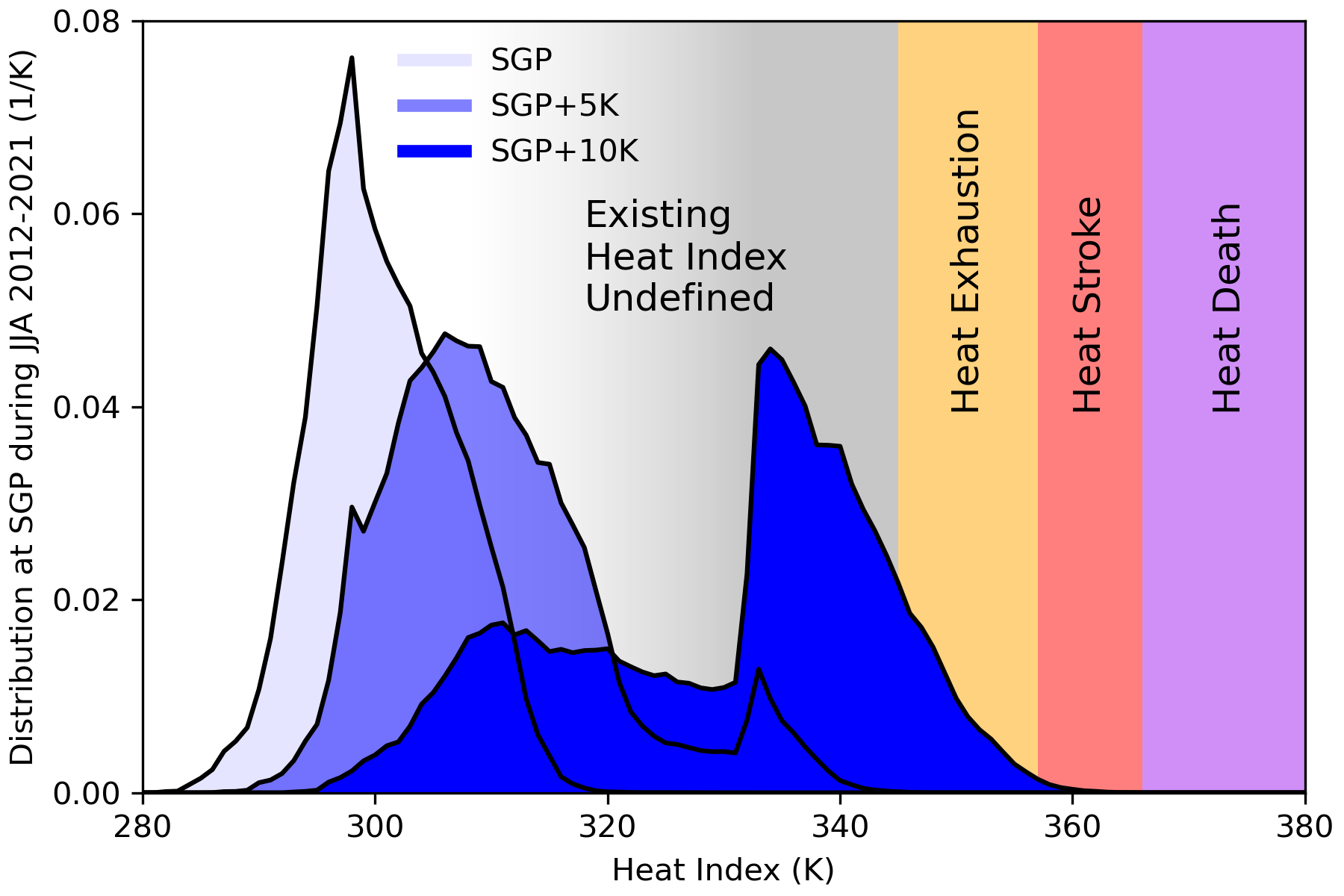Lu and Romps, Extending the heat index, JAMC, 2022
Heat index
Heat index in °F
Heat index in °C
Code
R (v1.1, Aug 25, 2022) : heatindex.R test.R
Python (v1.1, February 23, 2023): heatindex.py test.py
Fortran 90 (v1.0, May 20, 2022): heatindex.f90 test.f90 f90_makefile
Errata
In equation (23), the eighth term should include an ϵ. This has been corrected in the PDF below.
Paper
Description
The existing heat index is well-defined for most combinations of high temperature and humidity experienced on Earth in the preindustrial climate, but global warming is increasingly generating conditions for which the heat index is undefined. Therefore, an extension of the original heat index is needed. To extend the heat index, we use the same physiological model as in the original work of Steadman to ensure backwards compatibility. Following Steadman, each value of the heat index is mapped onto an observable measure of physiological stress.
The correspondence between the heat index and the physiological state allows us to assess future habitability under different warming scenarios. Even for a very fit individual (approaching the optimal human assumed in the thermoregulation model), the rate at which a human can expel heat is still constrained by physical laws that govern, for example, heat conduction and the evaporation of water. In a sufficiently hot and humid environment, the human body runs out of tricks for regulating its core temperature, leading to sickness or death.

(light blue) Distribution of the heat index at the ARM SGP site from one-minute measurements of temperature and humidity during JJA 2012-2021. (blue and dark blue) Same, but adding 5 K and 10 K to the temperatures while keeping the relative humidities unchanged. The grey region with gradient shows the range of Heat Indices where region IV transitions to region V. (The transition occurs within a finite range of heat index from 308 K to 333 K, and therefore is represented by the grey color with gradient.)